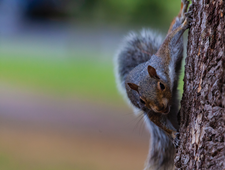A command-line file manager
Nimble Tree Climber

© Photo by Kev Kindred on Unsplash
The broot file manager guarantees clearer, quicker navigation of the directory tree at the command line.
You most likely use a file manager daily to do a variety of tasks from navigating the filesystem to creating, deleting, moving, and copying files. File managers come in many shapes and sizes, from command-line-only tools to the many Norton Commander clones (e.g., Midnight Commander) to graphical tools such as Dolphin (KDE), Nautilus (Gnome), Thunar (Xfce), or PCManFM (LXDE). In particular, if you have ever had to work with Windows Explorer, you will probably appreciate a good file manager.
Amongst the plethora of file managers, broot (pronounced "be root") clearly stands out from the competition in terms of functionality. Broot, an interactive file manager for the command line written in Rust, offers an innovative concept. It replaces commands such as ls and tree with an interactive display.
Copied from tree
Broot is maintained on GitHub [1] and works on Linux, Raspberry Pi OS, macOS, and Windows. Even in very large directories, this nimble file manager provides the user with a better and quicker overview. In principle, broot's display is based on the output from the tree command (Figure 1). However, broot displays the directory tree in a more compact way and makes the display interactive, in contrast to tree. You can search broot's tree display at lightning speed using fzf [2], a fuzzy search tool.
[...]
Buy this article as PDF
(incl. VAT)
Buy Linux Magazine
Subscribe to our Linux Newsletters
Find Linux and Open Source Jobs
Subscribe to our ADMIN Newsletters
Support Our Work
Linux Magazine content is made possible with support from readers like you. Please consider contributing when you’ve found an article to be beneficial.

News
-
Parrot OS Switches to KDE Plasma Desktop
Yet another distro is making the move to the KDE Plasma desktop.
-
TUXEDO Announces Gemini 17
TUXEDO Computers has released the fourth generation of its Gemini laptop with plenty of updates.
-
Two New Distros Adopt Enlightenment
MX Moksha and AV Linux 25 join ranks with Bodhi Linux and embrace the Enlightenment desktop.
-
Solus Linux 4.8 Removes Python 2
Solus Linux 4.8 has been released with the latest Linux kernel, updated desktops, and a key removal.
-
Zorin OS 18 Hits over a Million Downloads
If you doubt Linux isn't gaining popularity, you only have to look at Zorin OS's download numbers.
-
TUXEDO Computers Scraps Snapdragon X1E-Based Laptop
Due to issues with a Snapdragon CPU, TUXEDO Computers has cancelled its plans to release a laptop based on this elite hardware.
-
Debian Unleashes Debian Libre Live
Debian Libre Live keeps your machine free of proprietary software.
-
Valve Announces Pending Release of Steam Machine
Shout it to the heavens: Steam Machine, powered by Linux, is set to arrive in 2026.
-
Happy Birthday, ADMIN Magazine!
ADMIN is celebrating its 15th anniversary with issue #90.
-
Another Linux Malware Discovered
Russian hackers use Hyper-V to hide malware within Linux virtual machines.

